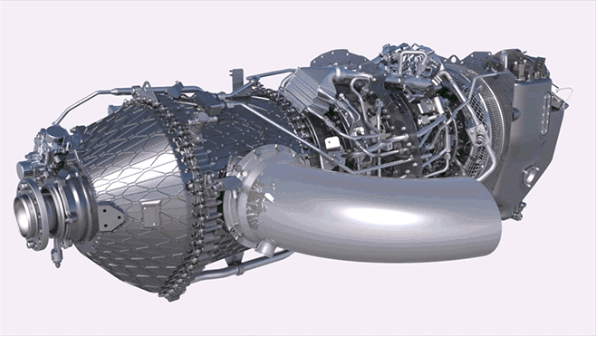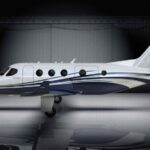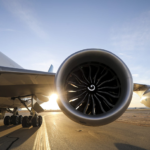

We’ve heard a lot about GE’s in-progress 3D printed turboprop engine, which was first announced a year ago. The engine, which will contain multiple titanium and steel 3D printed parts, will power the Cessna Denali, a 10-person business aircraft being developed by Textron Aviation. In November, GE Aviation announced that it had successfully carried out the first test of a demonstrator engine containing 12 3D printed parts, with the full Advanced Turboprop (ATP) engine scheduled to be tested sometime by the end of 2017. A test flight is planned to take place in early 2018.
This week, GE brought a mockup of the ATP to the EAA AirVenture event in Oshkosh, Wisconsin, allowing people to get a good look at it. Seeing it is a big deal – the engine is the result of more than a decade’s worth of research and development. It’s being produced with a number of processes developed by GE itself, including direct metal laser melting. It will be the first jet engine to largely be produced through additive manufacturing, as well as being the first “digital native” engine in the aviation industry. That means that its design was carried out through 3D modeling rather than 2D schematics.
The ATP will have a “digital twin,” created from data gathered by sensors in the actual engine. The virtual model will show wear based on real conditions and help operators predict when maintenance will be required.
“This is not a matter of simply replacing one production method with another, but of reinventing the way aviation engines are conceived and designed,” said Giorgio Abrate, engineering lead at Avio Aero, the GE subsidiary that developed the ATP.

13 of the ATP engine’s most critical components are being produced through additive manufacturing, including the combustion chamber and several structural elements. This will allow the engine to be simpler, lighter and more compact than other comparable engines. The ATP will have a 16:1 overall pressure ration (OPR), the best in the industry, meaning that it can deliver 15 percent lower fuel burn and 10 percent higher cruise power than competitors.
The ATP engine also has a 3D printed power gearbox housing, one of the first to be crafted with additive technology, which allowed engineers to explore new alloys that weren’t available before. Also additively manufactured is the combustor, which was built around a reverse-flow configuration that minimizes length while improving overall engine weight and installation. Using additive manufacturing allowed engineers to prototype and test multiple design concepts, which wouldn’t have been possible with more traditional methods of manufacturing.
The engine is rated at 1,300 shaft horsepower, and includes 3D aerodynamics, variable stator vanes, and fully integrated digital engine and propeller controls. One might call it the engine of the future, a technological showcase.
“It’s revolutionary,” said Gordie Follin, head of engineering for the ATP program. “The engine is using state-of-the-art technologies that we have validated in our large commercial engines. We are introducing them for the first time in the turboprop market…We are enabling Textron to provide a larger and more luxurious cabin with the same range and cruise speed that their customers expect. At the same time, the pilot will be sitting in a simplified, jet-like cockpit.”
The pilot will also be able to fly the plane as though it were a jet, controlling the engine and propeller with a single lever. The Cessna Denali is expected to be in full use by the end of 2019. Discuss in the GE Engine forum at 3DPB.com.
[Source: GE Reports]
If you're looking to get architectural 3D animation in the USA, our service provides an exceptional way to bring your architectural concepts to life through dynamic, immersive visuals. Through our platform, you can easily request high-quality 3D animations that showcase your designs in motion, offering a detailed view of your project from multiple angles and perspectives. Whether it's for a real estate development, a commercial building, or an urban planning project, our expert team ensures that every detail is captured in a visually compelling animation.
Through our website, you can seamlessly get architectural 3D animation tailored to your project’s specific needs. With our help, you can offer potential clients or investors an engaging experience that goes beyond static images. By integrating CGI animations with real-world settings, lighting, and textures, our team creates a lifelike experience that allows your audience to interact with your project as though it were already built. This service is perfect for presenting complex designs in a clear, visually attractive way that stands out in the competitive architectural market.




